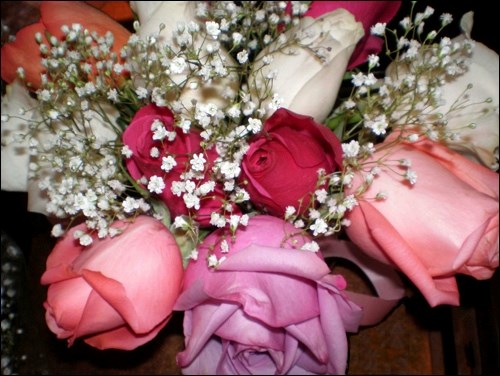Giving your special someone a dozen roses for Valentine’s Day may be the most clichéd way to say, “I love you” and is many times the refuge of desperate, forgetful husbands on sitcoms. However, roses and love have been linked across the ages and in many cultures.
In ancient Rome, roses and myrtle were combined in wedding bouquets as symbols of Venus, the goddess of love. Similarly, roses were often associated with and symbolized Aphrodite, Venus’ Greek cousin. Similar themes are found in Scotland with “O, my Luve’s like a red, red rose” [beginning phrase from a traditional Scottish song] and in England with “The rose is red, violet’s blue; Honey’s sweet and so are you” [traditional English rhyme]. And a Swedish proverb translates as, “If I had a rose for every time I thought of you, I’d be picking roses for a lifetime.”
Despite Gertrude Stein’s assertion that “a rose is a rose is a rose,” roses of different colours convey entirely different expression of love. Red, the most popular and safest choice of the season, refers to true love. Light pink, coral and orange signify desire and passion. Lavender and any colour of thorn-less rose represent love at first sight. And white symbolizes innocence, virtue and purity. If the warm handshake of friendship is what you want to communicate, then choose yellow roses.
For the budget conscious, the cost of roses on Valentine’s Day may be out of reach. The good news is there are several other, more affordable flowers that convey the meaning of love. Red or white carnations have the same meaning as red or white roses; pink carnations denote a mother’s love for her children; beware of giving yellow (disdain) and striped (refusal, no) carnations.
Other “love” flowers include: red tulip (undying love), purple tulip (forever love), white tulip (one-sided love), yellow tulip and daffodil (hopeless or unrequited love), forget-me-not (true love), primrose (eternal love), jasmine (unconditional love) and violet (faithfulness). A gardenia received anonymously means you have a secret admirer or a potential stalker.
Baby’s breath is a common addition to many bouquets. But it’s not just there for its airy, complementary texture. Its messages of innocence and purity of heart are a nice counterpoint to more emotional themes.
Taking care of your rose and cut flower bouquet:
If you don’t have time to arrange your flowers in a vase right away, at least put them in a container of warm water to keep them hydrated until you do have time.
Use a clean vase with ample space to hold the flowers and enough water.
Mix floral preservative with warm water and fill vase three-quarters full. If you don’t have preservative, mix two tablespoons lemon juice or vinegar and one teaspoon sugar in one quart of water.
Cut new ends on all stems and remove all leaves that will be below the water level.
Repeat the above steps every three or four days – empty and clean vase, refill with warm water and floral preservative and re-cut stems.
Keep the bouquet as cool as possible: out of direct sun, away from heat registers. But also keep it away from blasts of cold air: leaky windows and exterior doors.
Keep cut flowers away from ripening fruit.
Remove faded petals and flowers to keep your bouquet looking its best.




